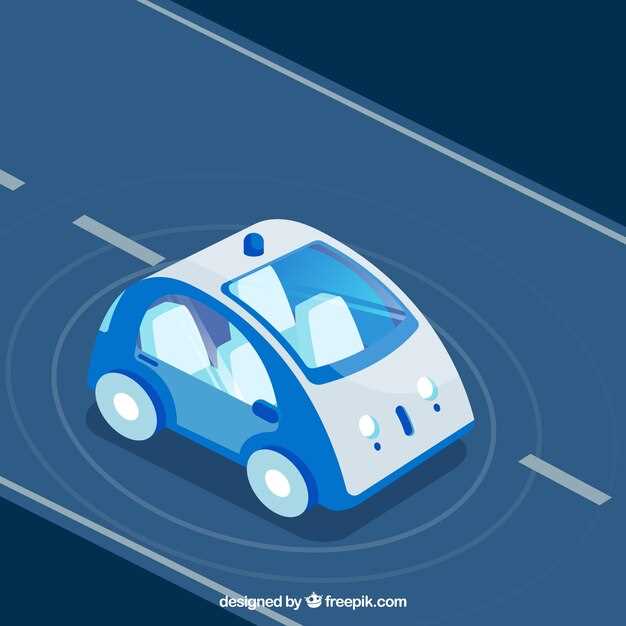Integrating AI and biometric technologies into vehicles significantly enhances safety measures. Utilizing facial recognition, cars can identify drivers and assess their alertness, adjusting settings to prioritize safety. For instance, if a driver appears fatigued, the system can suggest breaks or even take over control in critical situations.
Leveraging biometric data helps tailor the driving experience. Advanced sensors can monitor heart rates and stress levels, allowing vehicles to respond appropriately. This can include adjusting cabin environments or providing soothing audio-visual cues to mitigate anxiety during challenging driving conditions.
Furthermore, AI algorithms analyze driving patterns in real-time, predicting potentially hazardous situations. This proactive approach not only alerts the driver but also employs automated responses, such as emergency braking or steering adjustments, to prevent accidents. Collectively, these advancements pave the way for a significantly safer driving future.
Integrating AI for Real-Time Accident Prevention
Utilize advanced AI systems that analyze real-time data from sensors and cameras integrated into vehicles. This technology can detect sudden changes in driving conditions and predict potential hazards before they lead to accidents.
Implement the following strategies for optimal accident prevention:
- Continuous Data Monitoring: Install cameras and radar systems that provide 360-degree visibility. These devices monitor the environment, identifying obstacles, other vehicles, and pedestrians.
- Predictive Analytics: Employ machine learning algorithms that analyze historical driving data. These algorithms can predict high-risk situations based on patterns, such as sudden stops or erratic movements of surrounding vehicles.
- Driver Behavior Analysis: Use biometric sensors to evaluate driver alertness and fatigue. AI can provide real-time feedback, such as alerts or recommendations based on detected patterns of distraction or drowsiness.
- Vehicle-to-Vehicle Communication: Foster communication between vehicles to share data about speed, location, and direction. This coordination can allow for proactive measures, such as adjusting speeds or changing lanes to avoid potential collisions.
Integrate these systems into the vehicle’s safety framework to decrease reliance on manual input and enhance responsiveness. Training drivers on the benefits of these systems increases their awareness and confidence in utilizing technology effectively.
Regularly update the AI algorithms with new data to refine their predictive capabilities. Collaboration with automotive manufacturers and software developers can drive innovations in real-time accident prevention, ultimately reducing accident rates significantly.
How Biometrics Can Identify Driver Fatigue and Distraction
Integrate biometric sensors in vehicles to monitor vital signs for signs of driver fatigue and distraction. These sensors track heart rate, eye movement, and skin temperature, providing real-time data about the driver’s state. For instance, changes in heart rate variability can signal increased fatigue, while irregular eye blinking patterns may indicate distraction.
Utilize facial recognition technology to assess the driver’s attentiveness. Systems can analyze facial expressions and head orientations. If the driver’s gaze drifts away from the road or shows signs of drowsiness, the vehicle can issue alerts or even take preventative measures.
Smart steering wheels equipped with sensors can gauge grip strength and hand position. A relaxed grip might signify inattention, prompting the system to intervene by sending notifications or adjusting vehicle settings to enhance safety.
Combine these biometrics with machine learning algorithms to improve accuracy. This fusion allows the vehicle to learn individual driving patterns, adapting alerts to specific drivers based on their typical behavior. Regular updates based on collected data ensure that the system remains finely tuned.
Provide feedback through auditory or visual signals, alerting the driver when signs of fatigue or distraction occur. This proactive approach empowers the driver to make adjustments, promoting safer driving habits.
Encourage automotive manufacturers to implement these biometric solutions as standard features. As technology advances, making these systems affordable and available for all vehicles can significantly enhance road safety.
Predictive Analytics: How AI Can Anticipate Road Hazards
Integrate predictive analytics into vehicle systems to foresee road hazards effectively. AI algorithms analyze historical data, weather patterns, and live traffic conditions, allowing vehicles to predict potential dangers such as sudden stops, obstructions, or adverse weather.
Utilize machine learning models trained on vast datasets from various sources, including traffic cameras and sensor inputs. These models accurately identify risk factors and alert drivers in real-time. For example, road conditions like ice or heavy rain can be detected using historical weather data combined with current reports, prompting preemptive safety measures.
Implementing AI-driven predictive analytics can significantly reduce accidents. A recent study found that AI systems deployed in vehicles have lowered collision rates by up to 30%. With features that alert drivers about changing conditions, vehicles contribute to a safer driving environment.
| Feature | Description | Benefits |
|---|---|---|
| Real-time Data Analysis | Processes data from various sensors and external sources. | Improves situational awareness, enhancing reaction times. |
| Traffic Prediction | Analyzes traffic patterns to foresee bottlenecks and disruptions. | Helps in planning safer routes and avoiding hazards. |
| Weather Alerts | Utilizes meteorological data to assess driving conditions. | Provides warnings of impending adverse weather, promoting cautious driving. |
Predictive analytics can also enhance emergency response times. By sharing data with local authorities, vehicles notify them of accidents or hazardous conditions, facilitating quicker intervention and reducing congestion.
Incorporating these technologies paves the way for smarter, safer driving experiences, creating a future where AI plays an integral role in road safety.
Personalized Safety Protocols Using Biometric Data
Integrate biometric data for real-time driver monitoring to enhance vehicle safety. Use fingerprint recognition or facial authentication systems to identify the driver and adjust settings according to personal preferences and safety needs. This can include automatic seat adjustments and steering wheel positioning based on the driver’s physique.
Implement heart rate monitoring through wearable devices or built-in sensors. When the system detects elevated heart rates, it can activate additional safety measures, like adaptive cruise control or lane-keeping assistance, ensuring the driver remains composed on the road.
Facial recognition technology analyzes eye movements and blink rates. If it identifies signs of drowsiness or distraction, it can issue alerts or initiate an automated response that temporarily takes control of the vehicle to prevent accidents.
Combine biometric data with machine learning algorithms to tailor safety protocols further. By analyzing individual driving habits and preferences, vehicles can create personalized alerts for hazards specific to the driver’s style, such as overly aggressive acceleration or frequent lane changes.
Enable biometric scanning to create a safe driving environment for passengers. Systems can detect the presence of children or vulnerable individuals and adjust vehicle settings, such as airbag deployment or seatbelt reminders, to ensure the highest protection level in any situation.
Use continuous biometric data collection to enhance future vehicle designs. Manufacturers can benefit from insights on how various demographics respond to safety features, allowing them to tailor offerings that prioritize user-friendly safety enhancements.
The Role of AI in Enhancing Emergency Response Systems
Integrate AI-driven analytics to enhance real-time decision-making during emergencies. AI algorithms assess data from various sources, like traffic cameras and social media, predicting potential incident locations and optimizing resource allocation. This accelerates response times, ultimately saving lives.
Utilize machine learning to analyze historical emergency data. This approach can identify patterns and common factors in incidents. By training AI models on this data, responders can improve preparedness for similar situations in the future, tailoring protocols and training accordingly.
Implement autonomous drones equipped with cameras and sensors. These drones can rapidly reach accident scenes, providing responders with crucial information before they arrive. This aerial perspective enhances situational awareness and allows for effective triage of victims.
Deploy AI-powered communication systems that analyze incoming emergency calls. These systems can prioritize incidents based on urgency and type, redirecting resources to the most critical situations first. Enhanced triage options result in a more effective allocation of emergency personnel.
Incorporate biometric sensors into vehicles and wearables. These devices can monitor drivers’ and occupants’ health in real-time, transmitting vital signs to emergency dispatch. This information helps responders prepare and adapt their approach based on the victims’ medical conditions.
Leverage predictive AI models to foresee potential accidents based on environmental factors like weather conditions and traffic trends. By anticipating high-risk scenarios, emergency services can pre-deploy resources to those areas, enhancing readiness and response efficacy.
Utilize AI chatbots to handle non-critical inquiries. This practice frees human operators to focus on emergency cases, ensuring that those in need receive timely assistance. Chatbots can efficiently manage incoming communications, facilitating a more streamlined operation.
Regularly update and maintain AI systems based on feedback from emergency response personnel. This ensures the technology aligns with field realities and effectively supports responders’ needs, fostering collaboration between technology and human expertise.
Ethical Implications of Biometric Data in Vehicle Safety
Implement strict data protection measures. Each vehicle should only collect biometric data necessary for enhancing safety features, such as driver identification or health monitoring. Limit data collection to reduce exposure to potential breaches.
Prioritize user consent. Ensure users clearly understand how their biometric data will be used. Implement transparent consent forms and allow users to opt-out without losing access to safety features.
Establish secure data storage protocols. Utilize encryption and other security techniques to protect biometric information from unauthorized access. Regular audits should verify compliance with data protection regulations.
Conduct regular risk assessments. Identify potential ethical risks associated with biometric data use. Engage with ethicists, legal experts, and community representatives to refine policies and practices.
Develop anonymization techniques. If feasible, anonymize biometric data to reduce identification risks while still enabling enhanced vehicle safety functions. This approach balances functionality with privacy concerns.
Engage consumers in dialogue. Create forums or feedback channels where users can express their concerns and suggestions regarding biometric technology. Listening to user experiences fosters trust and transparency.
Collaborate with regulatory bodies. Work towards establishing industry-wide standards that govern the use of biometric data in vehicles. This cooperation can help create uniform practices that protect consumers while promoting safety innovation.
Monitor for bias in biometric systems. Regularly assess biometric recognition technologies for accuracy across diverse demographics, ensuring fairness in how systems operate. Developers should continuously strive to improve inclusivity.
Address the implications of data sharing. Clearly outline who can access biometric data, including third parties such as insurers or emergency services. Ensure that users retain control over their information and can retract permissions when desired.






